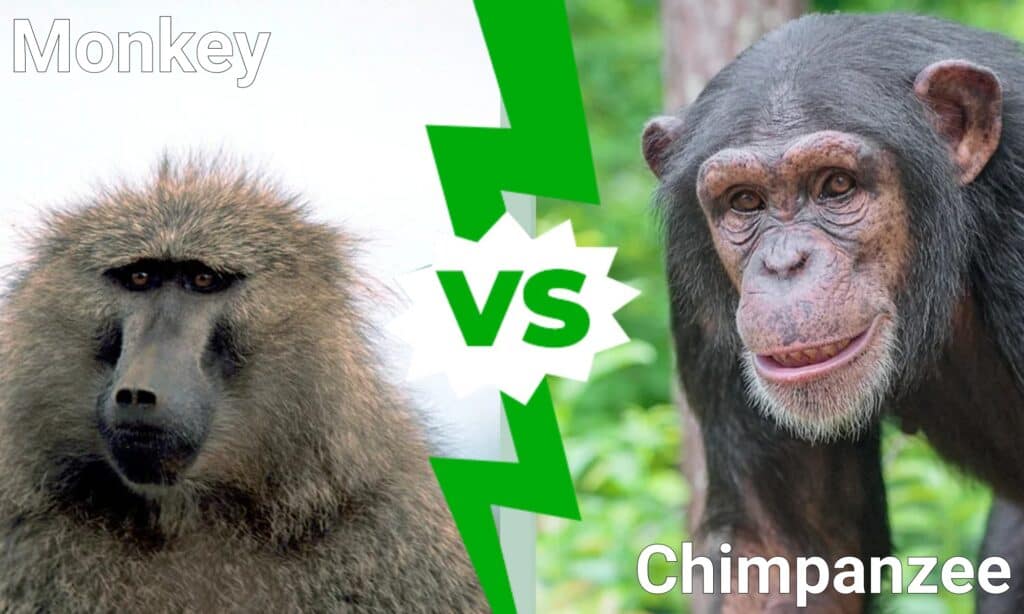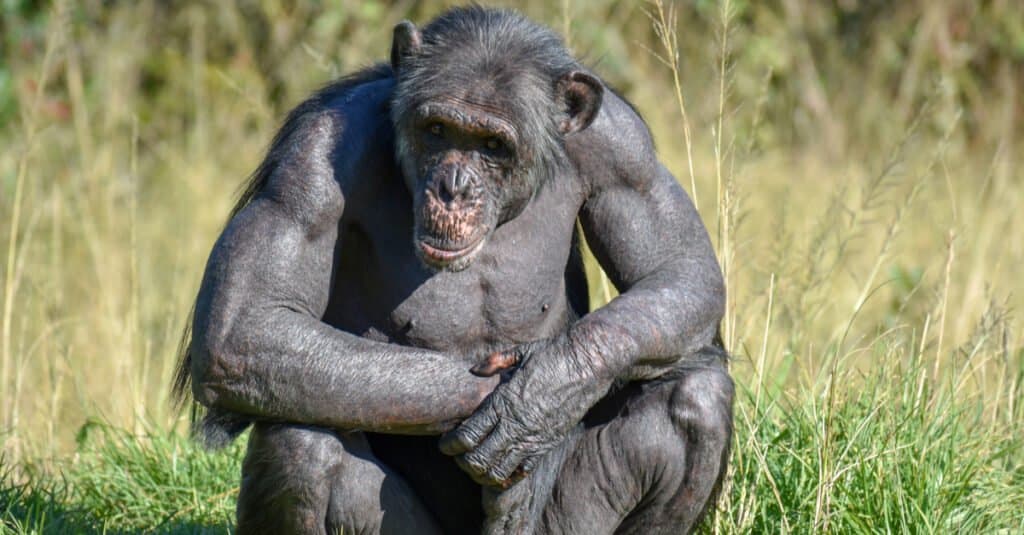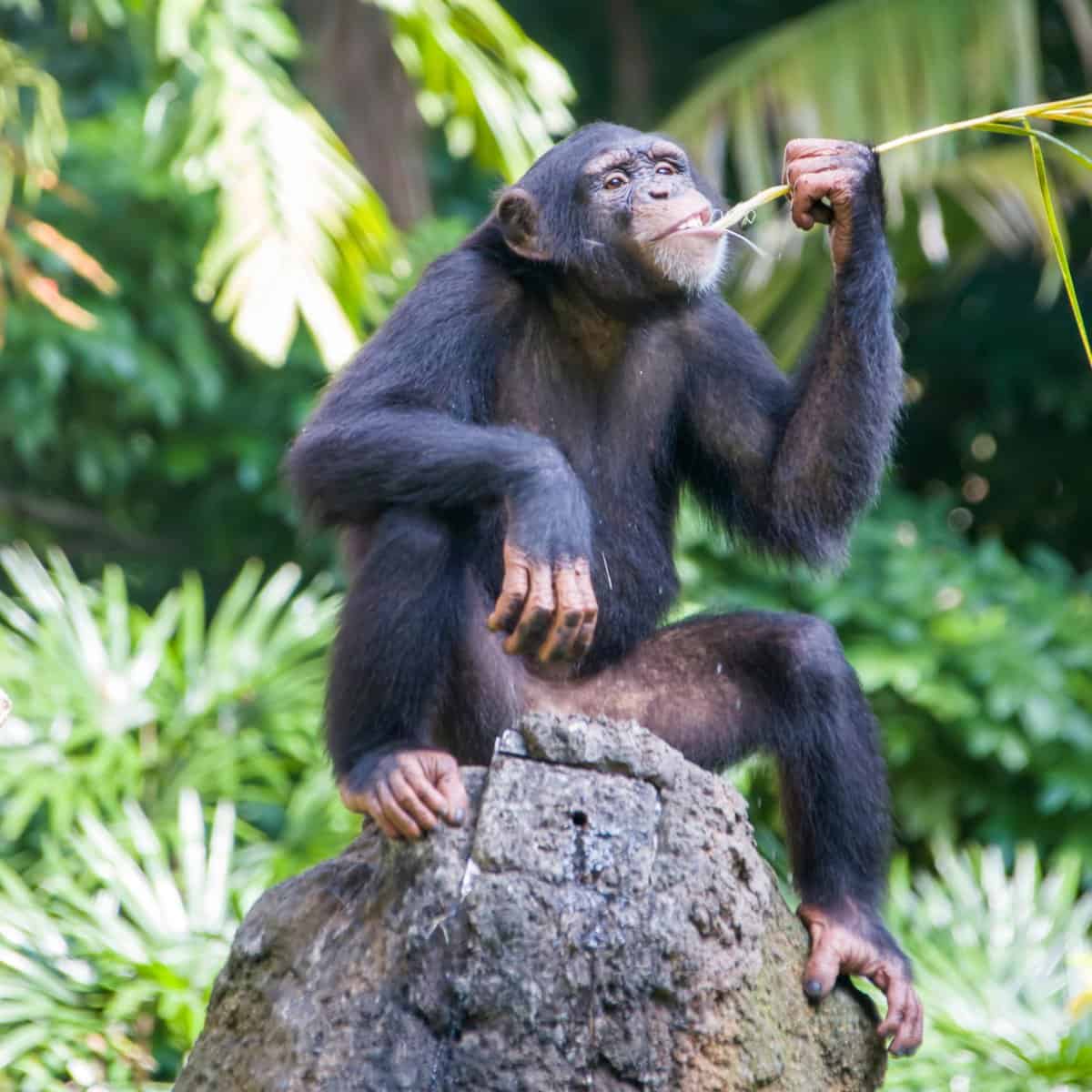Many people are perplexed by the similarities in appearance between monkeys and chimps. Monkeys and chimps can appear identical to the untrained eye, to the point where some pieces of literature misrepresent them. If you look closely at them, you’ll notice that they have many differences, no matter how similar they appear from afar. While both monkeys and chimps are primates, chimps are members of the ape family, which vastly differs from monkeys. In addition, chimps are our closest relatives, with only a 5% difference in their DNA. But, aside from their classification, what are the other differences between monkeys and chimps? Let’s explore the characteristics that distinguish the two species in the sections below.
Comparing a Monkey and a Chimpanzee

| Monkey | Chimpanzee | |
|---|---|---|
| Family | – Belong to the Monkey family, which can be divided into Old World Monkeys and New World Monkeys | – Belong to the Ape Family, and further classified into Great Ape species |
| Appearance | – Existence of tails: Shorter tails for Old World Monkeys and longer for New World Monkeys – Usually smaller and narrow-chested | – Do not have tails – Bigger and have broad chests and shoulder joints |
| Diet | – omnivores | – frugivore but also tends to be more carnivorous |
| Intelligence | – they have smaller brains so they are less intelligent | – they have bigger brains so they tend to be smarter than monkeys |
| Communication | – use sound and body language | – more advanced cognitive and language skills |
The 5 Key Differences Between a Monkey and a Chimpanzee
The main differences between a monkey and a chimpanzee include their family type, appearance, diet, intelligence, and ways of communication. While these two are different, both are a type of mammal called a primate. Primates are mammals with sophisticated cognitive development and abilities, grasping hands and feet, and forward-facing eyes, among other features.
This distinction between monkeys and apes may be helpful if you’re in the Americas, where any primate you see in the wild is almost certainly not an ape! Monkeys live in Central and South America, Europe, Africa, and Asia, whereas chimpanzees thrive in the wild throughout western and central Africa. They live in tropical rainforests, highland forests, and savannas. These two species are opposed, and we’ll go through each distinction in detail.
Monkey vs Chimpanzee: Family

Though chimpanzees are related to monkeys, they are not monkeys.
©Darren Hopping-Mills/Shutterstock.com
“Monkey” is generally accepted to refer to two types of primates: New World and Old World monkeys. A few significant variations between these two groups are their opposable thumbs, sitting pads, nose and septum form, and prehensile tails. Monkey species include baboons, macaques, marmosets, tamarins, and capuchins.
While related to monkeys, chimps are not monkeys at all. Instead, they belong to the Ape family, a different group of primates, and are further classified as members of the Great Apes. They belong to a family of mammals known as Hominidae. Other hominids include gorillas, orangutans, bonobos, and humans.
Monkey vs Chimpanzee: Appearance

Monkeys have tails while chimpanzees don’t.
©Jossfoto/Shutterstock.com
A simple way to tell the difference between monkeys and apes is to look for a tail; monkeys have one, and apes don’t, so chimps don’t have one either. However, Old World Monkeys have shorter tails than New World Monkeys.
Monkeys are typically smaller and narrow-chested, but apes are bigger and have broad chests and shoulder joints, which allow them to swing through bushes. While some monkeys even have this capability, they can’t swing from tree to tree like people think since their arm structures don’t allow it. Instead, they run across the branches. They are more likely to sprint up and down branches and climb to the summits of trees.
Except for their face, hands, and feet, chimpanzees have dark hair covering their entire body. Chimpanzees, like humans, have opposable thumbs. They may utilize these to climb, consume, and make tools out of branches and leaves.
Monkey vs Chimpanzee: Diet
Most monkeys are omnivores. They eat plant-based foods, such as fruits and nuts, and some meat, such as lizards and bird eggs. The diets of monkeys can change as the seasons change. They do eat bananas, but they’re not the same as what we’re used to seeing in the supermarket. Wild bananas have a lot of hard seeds and very little fruit that they can eat.
Chimpanzees are frugivores who eat fruit, seeds, leaves, flowers, honey, and insects. However, they hunt and eat antelopes, goats, and smaller primates. Chimpanzees create tools out of sticks to pull termites and ants out of mounds to eat. In general, chimps would prefer to eat meat more often.
Monkey vs Chimpanzee: Intelligence

Chimpanzees are more intelligent than monkeys.
©Kletr/Shutterstock.com
The most fundamental and distinguishing feature between monkeys and apes is, without a doubt, intellect. Monkeys’ brains are more primitive than apes’. While intelligent, monkeys are pale in contrast to apes in terms of intelligence.
Although it may not be evident at first look, apes are generally more intelligent than monkeys. They have a higher brain-to-body ratio than monkeys, which allows them to think more clearly and solve challenges. Chimpanzees, the genetically closest apes to humans, can even make and use simple tools to aid with food gathering and access.
Monkey vs Chimpanzee: Communication
Monkeys can interact with one another, but their communication is less complex than apes. Monkeys use facial expressions, vocalizations, and bodily gestures to communicate. They groom each other to express affection and make peace.
Chimps are social. They use vocalizations, hand gestures, and facial expressions to communicate, similar to humans’ nonverbal communication. They live in loose communities with a population of 12 to 100 people. Smaller family groups exist inside these communities. They groom each other, protect their home range from predators, and gather food as necessary. Communication skills assist chimps in developing complicated social teams and even exhibit a form of tradition. Like people, they can assume and resolve conflicts in their surroundings.
Thank you for reading! Have some feedback for us? Contact the AZ Animals editorial team.








